HANK: I am in airports most of today, and hope I'll be able to join the discussion. But while I'm battling airport security lines and the guy next to me is taking the armrests--the wonderful Jeannette de Beauvoir has been thinking. About murder. And she wonders what you think.
Murder, We’re Writing
Why is it that women become so engaged with murder
mysteries?
Here’s the thing: while only about a third of published
authors in almost all genres are women, women have long made up the majority of
adult readers. We read. A lot. And, more and more, both as readers and as writers,
we’re turning to crime… the crime of choice being, of course, murder.
And I’m not just talking about a gentle PBS-Geraldine-McEwan-as-Miss-Marple
kind of murder, either: we’re going for violent death as wholeheartedly as have
our male counterparts. Think about it: the mysteries that involve a clever
theft, or blackmail, or deceit of some sort usually seem, to a seasoned mystery
reader, all a little… flat. But put a little murder into the mix, and we perk
right up.
Why?
The most obvious answer is that death ups the ante, makes it
something worth thinking about, worth puzzling over. Reading about death (and
especially, perhaps, violent death) allows us to vicariously experience
something that we’re afraid of and—most of the time—don’t talk about. It’s a
truism that death has replaced sex as the taboo topic of social intercourse;
but our psyches still need to deal with it, and preferably in some way far
removed from our eventual personal demise. It’s the only explanation I can find
for the morbid curiosity that keeps people hanging around the scene of an
accident or behind police tape after any tragedy, a sort of fascinated schadenfreude; and it’s a good
explanation for why we read murder mysteries.
But it’s not the only one. We also like to see justice done,
especially when we perceive that the real world isn’t playing fair with us. If
the guilty party is caught and punished in the fiction we read, then perhaps we
regain the sense of order that’s lost whenever we hear the news. Every day, we
see situations that have us baffled, and our minds seek to cope with them: it often
feels that everything is getting way too far out of control. Reading about
Inspector Whatever arresting the culprit restores a little harmony, a little
control, a little of a feeling of safety.
Ah, safety. To my mind, that’s the real pointer toward why
women love murder mysteries. Safety is, for us, an all-important consideration.
As women, we understand what it feels like to live with fear humming constantly
in the background of our lives. Most of us grew up being consistently told—by
the media, by our protective parents, by horror tales at summer camp, by the
experiences of our older sisters—just how vulnerable we are. We’re not to wear
short skirts. We’re not to walk alone at night. We’re not to smile at men in
bars. We’ve been told effectively that just by virtue of being female we’re
wearing a big sign proclaiming, “Victim here! Victim here!”
I’m not saying that any of us have consciously adopted that
mantle; what I am saying is that most
of us were socialized to at least be aware that bad things could happen to us.
And they do; statistics show they do. One out of six women in the United States
will be sexually assaulted in her lifetime. I’m one of the one-in-six. Perhaps
you are as well. And even if we’ve never personally experienced violence, we
live in the awareness that it’s out there, that it’s always a possibility. We
listen for footsteps behind us on city streets at night. We keep out keys in
our hands, ready for quick escapes. We lock our doors. We have male friends
leave greetings on our voicemail.
That low hum is always there in the background; but when we
read or write crime fiction, we can explore our fear safely—and we can see it
resolved.
Okay, the reality is that women are frequently the victims
in murder mysteries. In real life, of course, men are actually more frequently
the victims of violent crime (for a number of reasons, a few of which should be
immediately evident); but it’s different in fiction: from mid-century pulp
fiction onward, women are routinely stabbed, raped, shot, and battered, leading
a number of writers to criticize the genre for a perceived misogyny.
I think they’re missing the point. True crime that focuses pruriently
on female victims may well be misogynist; but remember that we’re dealing here
with fiction, and as other writers have said far more eloquently than I can,
fiction is all about metaphor.
And so are its victims.
It’s a truism that those investigating a crime must often
remind themselves that it’s the victim who is at the center of the drama, and not
the murderer. The hunt for the killer is so intense, the need to live inside
that person’s mind and life, sift through clues to find motive, means,
opportunity, to pinpoint the fateful moment when their path crossed that of the
person they killed, that it can be easy to remember how the whole case began:
with the ending of a life.
So in a sense the victim is really only the starting-point,
the launch of the hunt for the killer. Victim as accessory.
And not just as accessory. Woman as murder victim is an
exact embodiment of what many cultures are constantly informing women (and men)
that women should be: a collection of body parts. In murder mysteries, those
body parts are disassembled, dissected, and weighed in autopsy suites. In
pornography, those body parts are used, assembled and reassembled, augmented.
In capitalism, those body parts are used to sell lipstick, clothing, and
plastic surgery. In all of those cases, the body parts are isolated from the
woman herself: her mind, her soul, her life, her being.
The truth is that we’re used to being reduced to our body
parts. In real life, it’s radically damaging. In fiction, however it can be
empowering. When we’re young we’re expected to chase beauty; when we’re mature
we’re expected to chase invisibility; but crime fiction gives our rightful
place back to us—we don’t have to be either beautiful or invisible. Crime
fiction awakens the Medea in each of us: it gives us permission to unlock all
the things that we really feel about that victim in the autopsy suite. We feel rage.
We feel aggression. We feel vengeful.
We feel powerful.
The woman victim in a murder mystery is Everywoman. She is
vulnerable. She has absolutely been used and thrown away. She is a potent
symbol of our struggle to get away from all the words that define us: wife,
mother, slut, caretaker, mistress, bitch. Those words represent life-sucking
roles; in crime fiction, we reject them all. We have been victims, and we will
have our revenge for it. We will fight it. Whether we are the detective
avenging the crime or the criminal exulting in her decision to act, we have
reclaimed our power. We are that body in the autopsy suite, and by God, we will
rise from it fierce and renewed.
And many of our crime novels feature a woman protagonist,
the solver of crimes, the avenger of the innocent. She’s usually more harried
than her male counterparts: they tend to be divorced loners—she’s still trying
to hold it all together. Yet she’s the one who takes that body emotionally home
with her, she’s the one who always remembers that it’s the victim, and not the
killer, who is central to her case. As women readers, we identify with this
female protagonist. As much as the victim in the autopsy suite, she is us, too:
she is working hard to make the world a better place while remembering to pick
her 12-year-old up after hockey practice and getting the mammogram scheduled and
buying the broccoli and trying to figure out whether her 15-year-old is smoking
pot. And yet with all her imperfections, she’s the one who’s going to solve the
crime. She’s the one who will restore our faith in balance in the world. She’s
the one who will speak for the victim.
And that’s a very good reason to read mystery fiction.
Jeannette de Beauvoiris the author most recently of Deadly Jewels from St. Martin’s/Minotaur, the second book after Asylum in the Martine LeDuc Montréal mystery
series.
Someone was murdered in Montréal during World War Two over some stolen
diamonds (from the British crown jewels, no less), but Martine finds that the
murders aren’t over yet as she investigates neo-Nazis, diamond merchants, fake
jewels, and very present motives that reach back into the concentration camps
and forward into her own family.







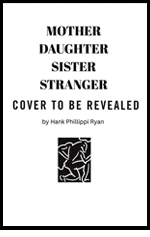
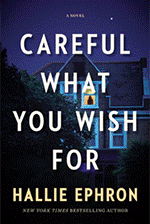
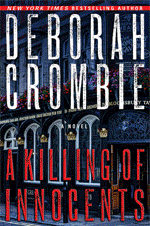
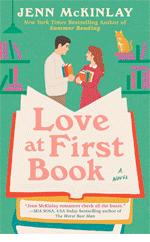


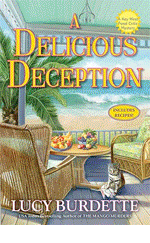
No comments:
Post a Comment